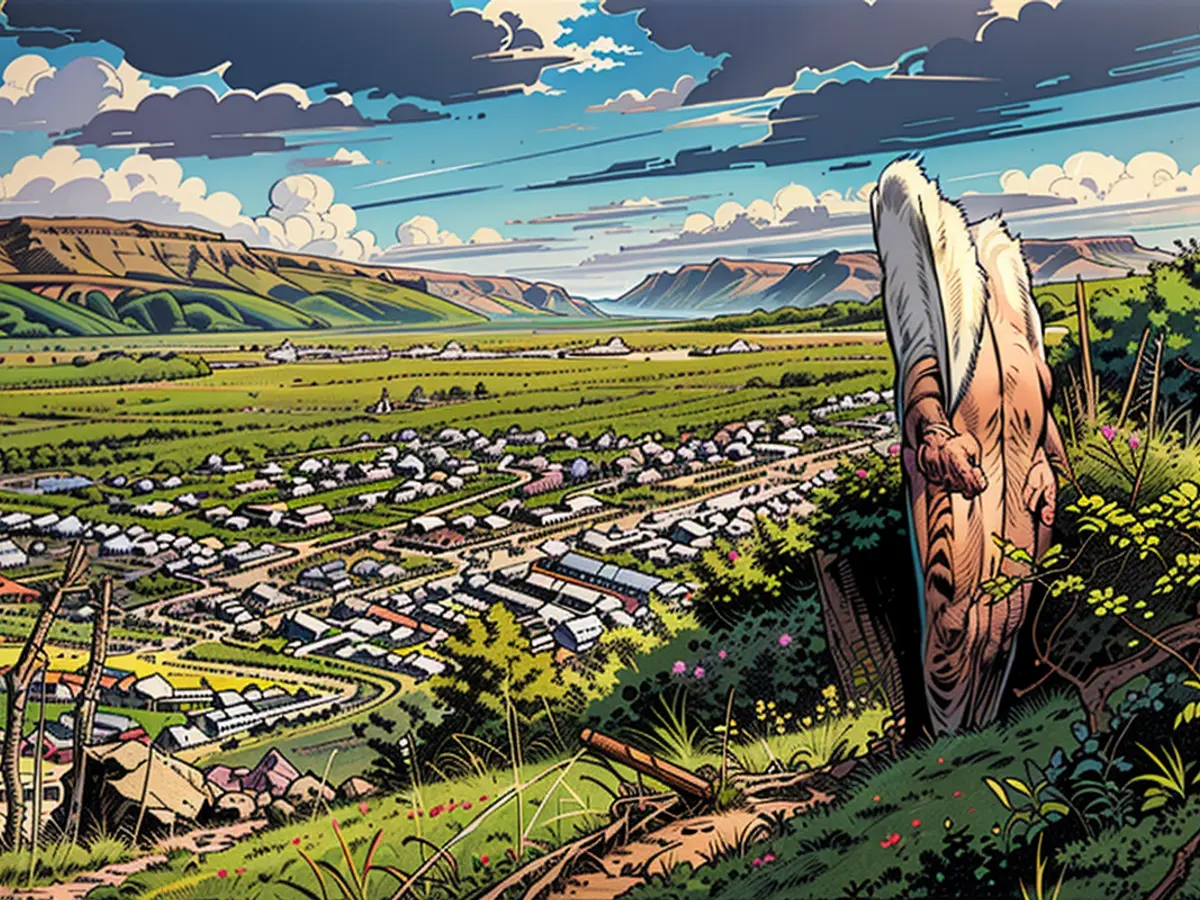Inbreeding did not cause woolly mammoths to die out
Around about 10,000 years ago, there were barely any Woolly Mammoths left - only a few remained on an island. They survived for many generations, despite their small numbers and inbreeding. However, this was not the cause of their extinction, according to a research team, as reported in the journal "Cell". Instead, they were likely wiped out by a random event - "and if this random event had not occurred, there would still be mammoths today", said first author Love Dalén from the Centre for Palaeogenetics in Stockholm.
The last group of Woolly Mammoths (Mammuthus primigenius) had been isolated on the Wrangel Island off the Siberian coast around 10,000 years ago, as the sea level rose and the island became separated from the mainland. The animals that lived there for the following 6,000 years were descended from a maximum of eight mammoths, according to new analysis. The population then grew to around 200-300 individuals within 20 generations, as reported by the researchers. The species went extinct around 4,000 years ago.
Probes from the last 50,000 years of Mammoths
The team led by Dalén analyzed the genomes of 21 Woolly Mammoths - 14 from Wrangel Island and 7 from the earlier mainland population. In total, these samples covered the last 50,000 years of the existence of the Woolly Mammoth and showed how the genetic diversity of the species changed over this period.
The genomes of the mammoths from Wrangel Island showed signs of inbreeding and lower genetic diversity compared to their ancestors on the mainland, explained the scientists. This affected, among other things, the genes for the so-called MHC complex, which plays a crucial role in immune defense in vertebrates.
Population size remained stable until the end
Although the genetic diversity of the population declined steadily over the 6,000 years on the island, this happened very slowly, according to the study. This suggested that the population size remained stable until the end. It was therefore not the case that a continually decreasing fitness drove the group to extinction. "We can now refute the idea that the population was simply too small and went extinct due to genetic reasons", Dalén concluded.
Slowly but surely, harmful mutations had accumulated among the animals over the course of the approximately 200 generations. However, only moderately harmful mutations had accumulated. "An individual with an extremely harmful mutation is essentially not viable, so these mutations gradually disappeared from the population", explained the evolutionary geneticist.

Important insights for conservation programs for rare species
The findings provide important insights for conservation programs for rare species, according to the researchers. By studying the genetic changes that occurred in the Woolly Mammoth population, they were able to gain a better understanding of how genetic diversity can be maintained in isolated populations and how to prevent the accumulation of harmful mutations. This knowledge can be applied to the conservation of endangered species today to help ensure their long-term survival.
The recorded accumulation of harmful mutations once again provides important insights for today's conservation programs for rare species: It is not enough to bring a population back to an acceptable size. A numerical recovery does not necessarily go hand in hand with genetic recovery. Instead, a restricted diversity can persist for thousands of years, as the example of the Island Mammoths shows.
The last 300 years of the existence of Woolly Mammoths were not covered by the considered samples, according to the researchers. "What finally happened is still a mystery - we don't know why they went extinct, since they had been doing relatively well for more or less 6000 years, but we believe that it was something sudden," said Dalén.
Epidemic possible
An epidemic is a possibility. In this case, it was less likely for humans - they had not arrived on the island until four centuries after the mammoths had gone extinct.
The researchers have now excavated fossils from the last period of the mammoths and plan to analyze them genetically. "I would say there is still hope to find out why they went extinct," said Dalén.

- The genetic analysis of Woolly Mammoth fossils from Siberia, conducted by Love Dalén and his team, has significant implications for the field of paleontology and education.
- The lower genetic diversity observed in the last group of Woolly Mammoths from Siberia, as a result of inbreeding and isolation, led to changes in the MHC complex genes, which could impact future genetic research on immune defenses in mammals and other animals.
- The findings from the genetic research on Woolly Mammoths from Siberia highlight the importance of conserving the genetic diversity of rare species, not just focusing on population size, to ensure long-term survival, as revealed through the observations of this extinct species.







